Written by 2022 Summer Intern Walker Marechal, hosted by Mike Allen (UF/IFAS NCBS) and Caleb Purtlebaugh (FWC)
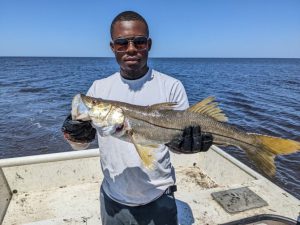
Fishery monitoring is critical to assessing the health and sustainability of fish populations in Cedar Key, West Florida. Fish populations are monitored because they constitute the essential components of the aquatic ecosystem and important ecological indicators that combine natural and development-related changes over time.
Internship Experience
During the summer of 2022, I had the privilege to work at the Florida Fish and Wildlife Conservation Commission, particularly with the Fisheries Independent Monitoring program (FIM) in Cedar Key. The FIM program uses stratified-random sampling (also known as proportional random sampling and quota random sampling) to assess the relative abundance of estuarine fishes and selected invertebrates. We collected fish using offshore trawls, a 70-foot seine net with a small mesh size, which allows for capturing juvenile and small adult fishes and crustaceans, and a 600-foot haul seine (net with a bigger size) to capture subadult, adult fishes, and crustaceans. The fish caught were identified, measured, and then released alive. Further, the selected fish from certain species were kept in ice as a representative sample for further analysis in the laboratory. Therefore, in each habitat, we recorded the water-quality parameters such as temperature, salinity, conductivity, pH, and dissolved oxygen.
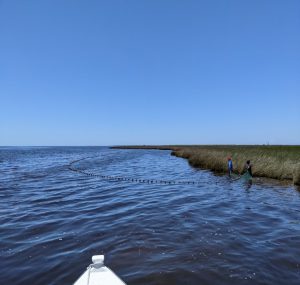
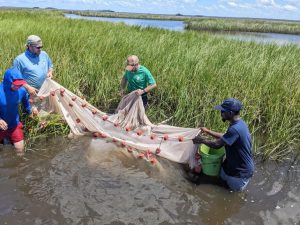
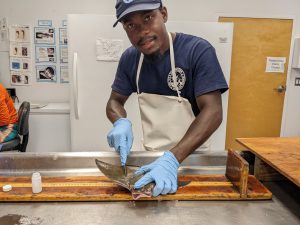
I gained knowledge about the vernacular and the scientific names of the fish species present in Cedar key. Additionally, I learned about fish dissection, such as pulling otoliths, removing gonads, and extracting mercury samples in the lab. The organs abovementioned were sent to the University of Florida (UF) for further analysis.
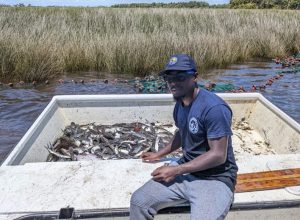
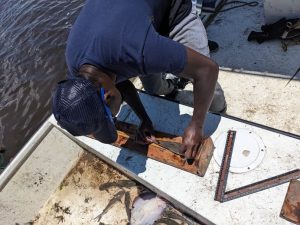
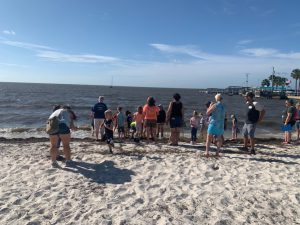
K-12 Education: Effective Strategies to Teach Kids
There is no question that education is a powerful force for promoting opportunity and growth. K-12 education is not mainly focused on teaching academics, such as mathematics and science, but on preparing the students to be successful and be good citizens. Each month, the UF/IFAS Nature Coast Biological Station (NCBS) Discovery Center hosts the K-12 program for the students in Cedar Key. At the station, the kindergartner could get to know about the touch tank (Native CK Species), aquaculture display, and map of the Suwannee River watershed, to cite only those.
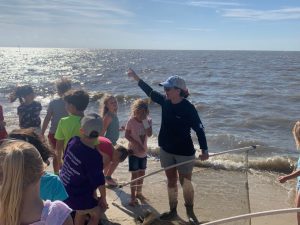
Before going to the beach, the students practiced how to construct an unprotected sandy shoreline and a protected shoreline using natural items like seagrass and oysters. The objective of this activity was to help the students have a better understanding of shoreline protection.
At the shoreline, the kids played scavenger hunt while giving a list of items such as shells, feathers, animal tracks, and plastics found on the beach. The students were encouraged to dispose of the artificial trash properly. The kids could also seine in using a small net and identify the marine organisms they captured.
I was impressed to see how the kids were involved and dedicated to this activity. It was a privilege to work with the kindergartner in Cedar Key. Those kids are the future, in every sense of the world.
Water Quality Sampling
The Lone Cabbage oyster reef is a chain of intertidal reefs located approximately 3 km south of the East Pass of the Suwannee River and 12 km north of the town of Cedar Key, Florida. We collected twelve samples (12) of water quality at multiple locations. The parameters such as dissolved oxygen, temperature, pH, and conductivity were considered. We also measured the elevation depth. The water samples collected were kept in ice and then transported to the laboratory at the University of Florida for analysis.
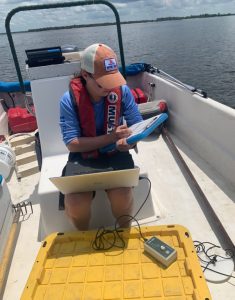
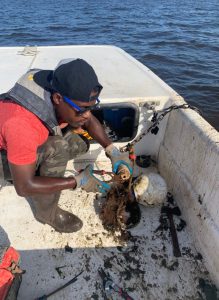
I was happy to work with Jamie. She is well motivated and passionate about her work.

Quail survey: A useful technique for monitoring quail populations
Evaluating the quail population weekly at the Lower Suwanee National Wildlife Refuge helps the technicians comprehend the abundance of bobwhites in the Refuge. This assessment is helpful in planning hunting and habitat management. The timing and the methods applied for the survey are critical.
We adopted the call (indirect) counts method to assess the bobwhite quail populations. This method includes spring call counts during mating (estimating adult males in the breeding population) and fall covey counts to measure the abundance before the hunting season.
It was an excellent opportunity to do the quail survey with Andrew, the Refuge’s manager. Thanks!
Thanks again!
A special thanks to everyone who works at the UF/IFAS Nature Coast Biological Station (NCBS), especially Dr. Mike Allen. I also want to thank Anthony (aka Taj), Stephanie, Victoria, Brandon, Jennie, Will, John, and Brian for guiding and teaching me in the field. Without your contribution, I would not be able to achieve that goal. I firmly believe that this experience will help me throughout my professional career. This internship fulfilled my expectations, and I would advise the students to take this opportunity as an intern at NCBS.
Click here if you’d like to know more about Undergraduate Summer Internships with UF/IFAS NCBS.
 3
3
